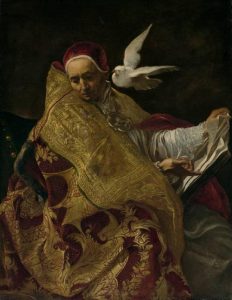Words on the Word
St Gregory the Great
The saint whom we in the West know as Gregory the Great is known in the Greek Church as Gregorios ho Dialogos.
He is chiefly associated there with his books of Dialogues, the second of which contains his life of St Benedict. Translated into Greek by another pope, Saint Zachary, the Dialogues became staple reading among monks and laypeople alike. That most Greek of Greek theologians, St Gregory Palamas, cites Gregory’s portrait of Benedict as an example of contemplative perfection.
Gregory began work on the Dialogues in 593, in his third year as pope. When a pope, as busy in the sixth century as in the twenty-first, takes time out for literary work, it is because he has something vital to say: think of the priority Benedict XVI gave to his three volumes on Jesus.
When Gregory started on this project, southern Europe was in turmoil. Lombard invaders were spreading chaos. Many people (including, it would seem, Gregory himself) assumed the end of the world was near. With crises breaking out all around him, he set to work on the Dialogues, a collection of biographies of Italian saints.
Why? Were there not more urgent tasks to attend to?
Gregory did not think so. He started writing, he tells us, on a day when he felt especially depressed, overwhelmed by worldly business. In a conversation with the deacon Peter he spoke of his nostalgia for the spiritual aspirations of his youth. Peter noted what a pity it was that there were no models of Christian perfection from their own time and country. Mosts saints seemed, somehow, to be either foreign, long dead, or both.
Gregory rose to the challenge, for he knew of outstanding witnesses. And so, in order to counter barbarism, he began to draw a series of portraits of Christ as he had revealed himself in the lives of men and women with whom readers could identify.
In our day, Lombards present no great cause for anxiety. But barbarian forces are nonetheless close at hand: we ascertain this daily.
To renew our society we need more than just re-budgeting and larger prisons. We need a new sense of purpose, a new unifying energy; we need men and women whose goodness of life makes us want to be like them. We might follow Gregory’s example and seek out saints of our own time, Christians who have followed Christ in the world as we know it, not in an idealised past.
Inspired by their example, strengthened by their prayers, we shall gain courage to walk as they walked. Then, who knows, perhaps we can restore hope to our world, so tired of today, so afraid of tomorrow?

Seventeenth-century portrait of St Gregory the Great by an unknown painter.
